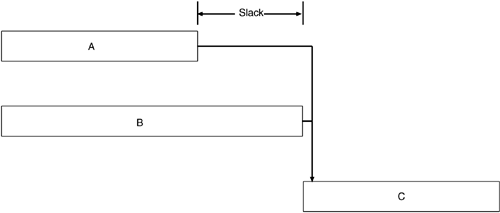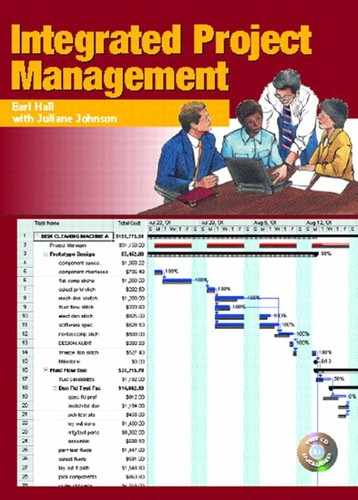Introduction
The completed project Gantt chart, laid out by hand on graph paper or, more likely, laid out using project management software, displays a sequence of tasks that have the characteristics of stair steps descending from start to finish. Within this display is a sequence of tasks where each successive task depends upon its immediate predecessor and starts as soon as this longest predecessor is completed. There is no time break in this sequence.
This sequence is called the critical path. It is a string of dependent tasks that have the longest duration. Generally, there is only one critical path through a project. Occasionally, there is more than one, however. The critical path identifies the amount of time that is required to complete the project. If any task on the critical path overruns, the project completion date then will be moved out by the period of time that the task overran.
A critical path is not a sequence that the project manager chooses. It is a product of the project plan development. The project manager and the team do not know which tasks comprise a critical path until the Gantt chart is completed. Sometimes individuals inside and outside the project speak of one task or several tasks as being critical. These tasks may be critical for any number of reasons. They may be very important to the quality of the project output; they may be long tasks; they may require many task team members. In the sense that “critical” is used in project management, they are not critical unless they are on the critical path or have a predecessor character for tasks on the critical path and have very little slack to use before they become critical.
Project managers and project teams need to know which tasks comprise the critical path in order to do risk analysis. The critical path also becomes a very useful management tool for the project manager after the project is launched. The project manager will need to know which tasks are on the critical path, and how much slack the other tasks have that can protect them from overruns which would impact the critical path. You can refer to the critical path chart when considering start delays for non-critical tasks.
Slack, for a task—Task A—is the time between the scheduled task completion date and the scheduled start date of Task A's successor—Task C. Task C's start is delayed because it has another predecessor—Task B—that parallels Task A and has a later completion date. See Figure 7-1.
Figure 7-1.

There are several ways of representing the critical path and task slack graphically. Project management software can identify the critical path tasks and slack on the Gantt chart. This representation is not as obvious as an arrow diagram critical path chart. The IPM method recommends that the project manager always create and use an arrow diagram critical path for both guiding risk analysis and for managing the project.
